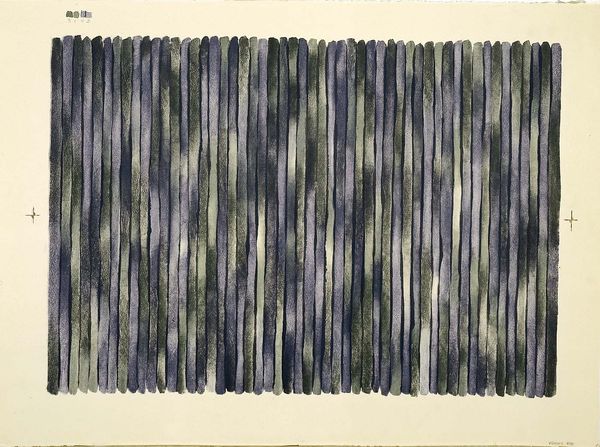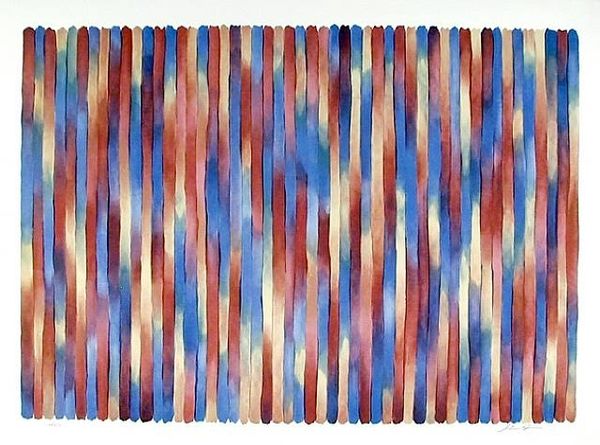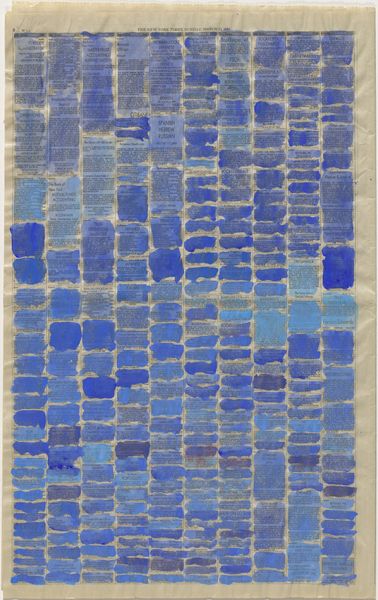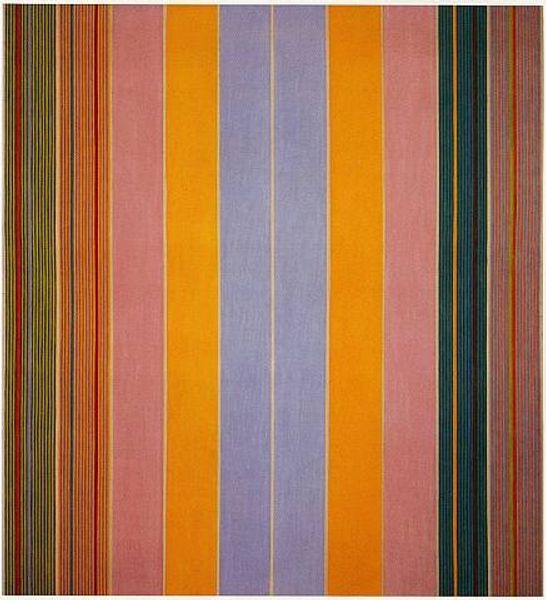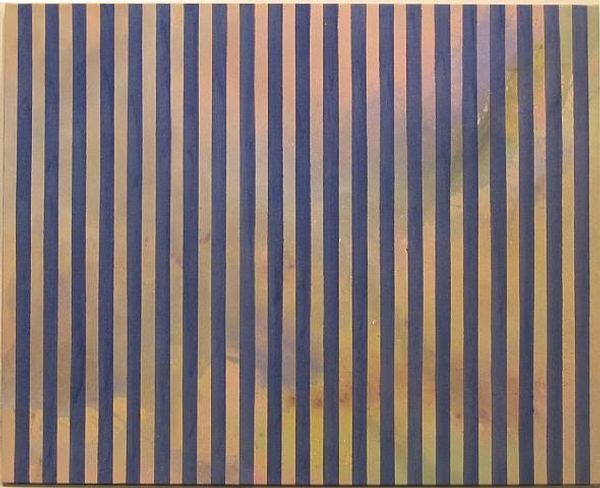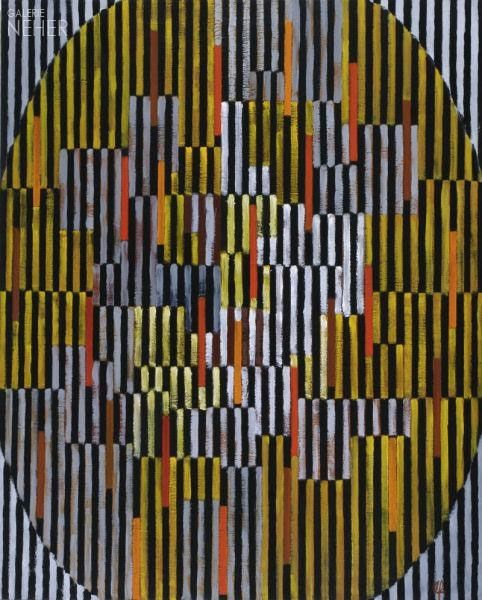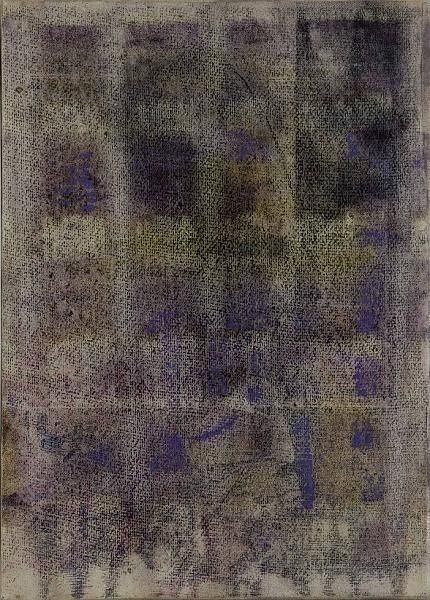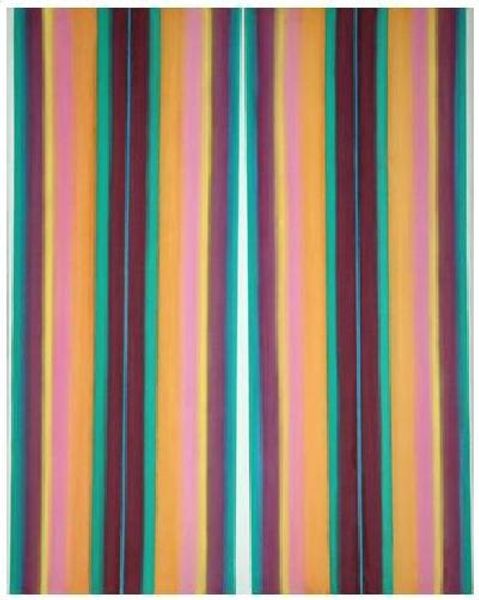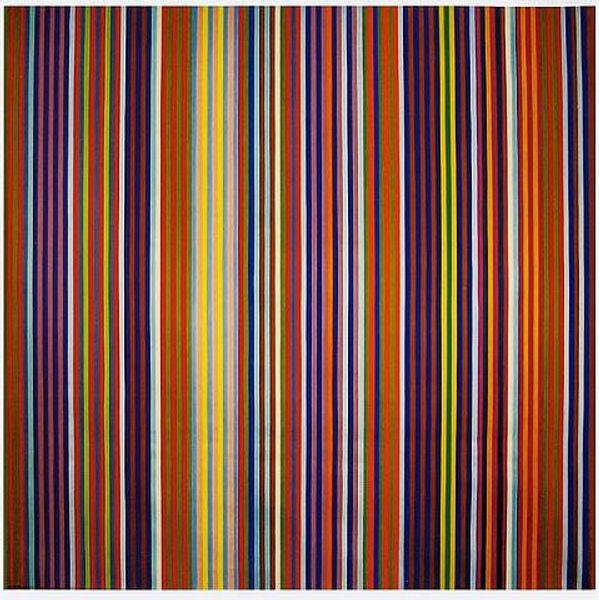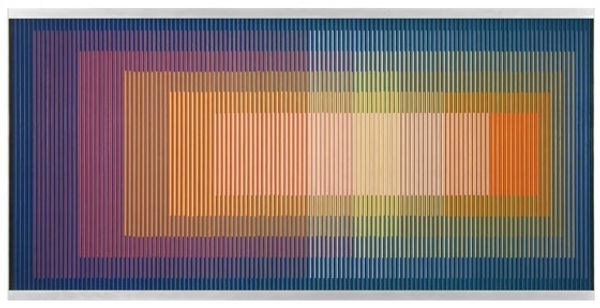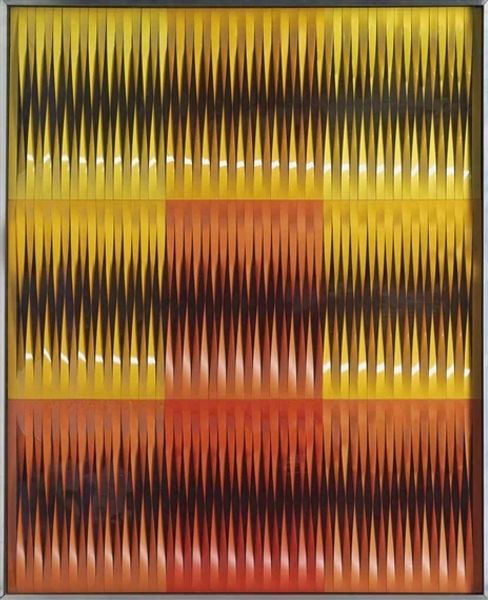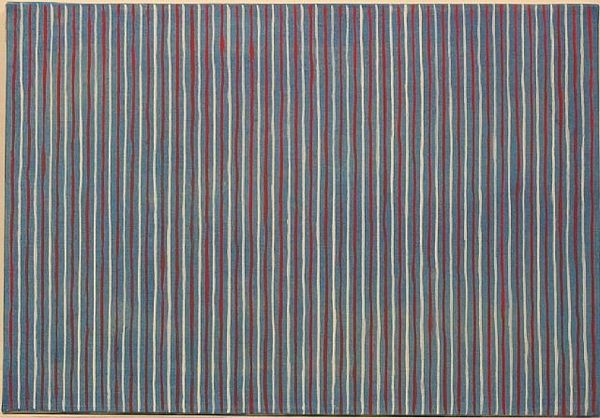
Copyright: Gene Davis,Fair Use
Editor: So this is Gene Davis’ "Black Friar" from 1978. It’s an acrylic painting comprised of vertical stripes, predominantly blues, browns, and some hints of green. I find the composition almost meditative in its repetition. What are your initial thoughts looking at the work through a Materialist lens? Curator: Immediately, I’m drawn to the acrylic itself. Acrylic paint, by the late '70s, had become an accessible medium, almost democratizing painting. Consider the socio-economic implications: was Davis intentionally choosing this "common" material? Was it a rejection of the preciousness often associated with oil painting, challenging those established hierarchies? Editor: That's interesting, I hadn't considered that aspect of acrylic paint. So the very choice of material is a statement in itself? The mechanical process too looks pretty straightforward; is there a deliberate rejection of gestural abstraction? Curator: Precisely. Abstract Expressionism, with its emphasis on the artist's hand and unique, often tormented genius, was fading. Here, the emphasis shifts. The regularity, the almost manufactured feel of the stripes – isn’t there a parallel to industrial processes, to repetitive labor? Are we seeing a subtle commentary on the shift towards a more automated society reflected in the very act of creation? Also, have you considered how the scale relates to its exhibition space? Is its size, or its potential for seriality, inviting a different form of consumer engagement compared to a unique abstract work? Editor: That gives me a lot to think about! I was so focused on the aesthetic qualities of the colour, that I had completely overlooked the social commentary embedded within the material and the act of creation itself. It is far from meditative now! Curator: Exactly. We must always investigate beyond the surface of any work, and towards the artist's own choices as well as the forces in society that guide these. Hopefully it adds a new perspective into the artwork’s historical standing.
Comments
No comments
Be the first to comment and join the conversation on the ultimate creative platform.
